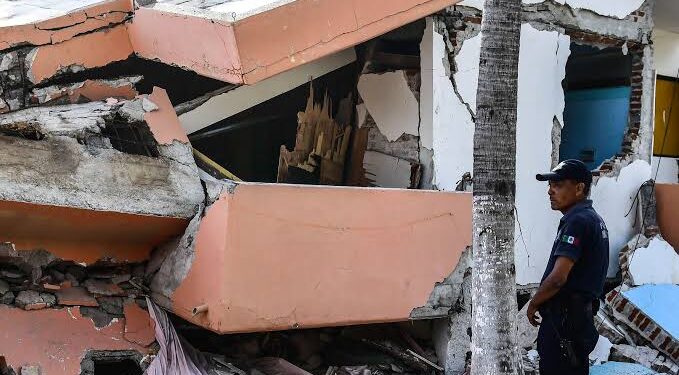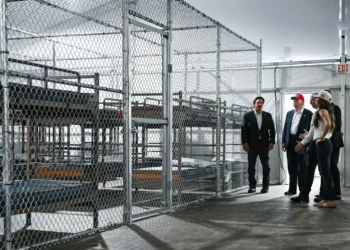A significant seismic event struck the region, impacting several areas. A 5.3 magnitude earthquake was recorded, causing widespread notice across West Texas and parts of New Mexico.

The earthquake’s impact was felt in major cities, including El Paso and Carlsbad. Residents reported feeling the tremors, although initial reports indicate minimal damage.
This earthquake serves as a reminder of the region’s seismic activity and the importance of preparedness.
Key Takeaways
- A 5.3 magnitude earthquake hit the West Texas area.
- The earthquake was felt in El Paso and Carlsbad.
- Initial reports suggest minimal damage from the quake.
- Residents are advised to be prepared for aftershocks.
- The region’s seismic activity highlights the need for earthquake preparedness.
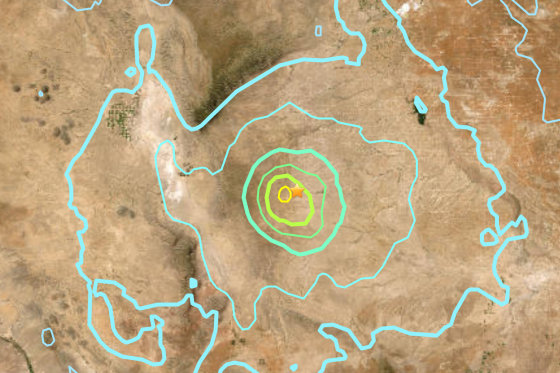
Breaking News: 5.3 Magnitude Seismic Event Strikes Texas-New Mexico Border
A 5.3 magnitude earthquake struck the Texas-New Mexico border, catching residents off guard. This significant seismic event has brought attention to the region’s earthquake activity.
Initial Reports and Emergency Alerts
Initial reports indicated a substantial earthquake in the area, prompting emergency alerts to be issued to residents in El Paso and Carlsbad. The sudden onset of the earthquake led to immediate concerns about potential damage and safety.
Emergency services were quickly activated, with first responders and local authorities assessing the situation. The earthquake’s impact was felt across various neighborhoods, with reports of shaken buildings and infrastructure.
USGS Confirmation and Official Magnitude Assessment
The United States Geological Survey (USGS) confirmed the earthquake’s magnitude at 5.3, providing an official assessment of the seismic event. According to the USGS, the earthquake’s epicenter was located near the Texas-New Mexico border.
The USGS’s confirmation helped to clarify the scale of the earthquake, allowing for more accurate reporting and response efforts. The official magnitude assessment is crucial for understanding the earthquake’s potential impact and for guiding relief efforts.
The USGS earthquake data highlighted the significance of this event in the region. As the area continues to assess the aftermath, the focus remains on ensuring the safety and well-being of those affected by the earthquake today.
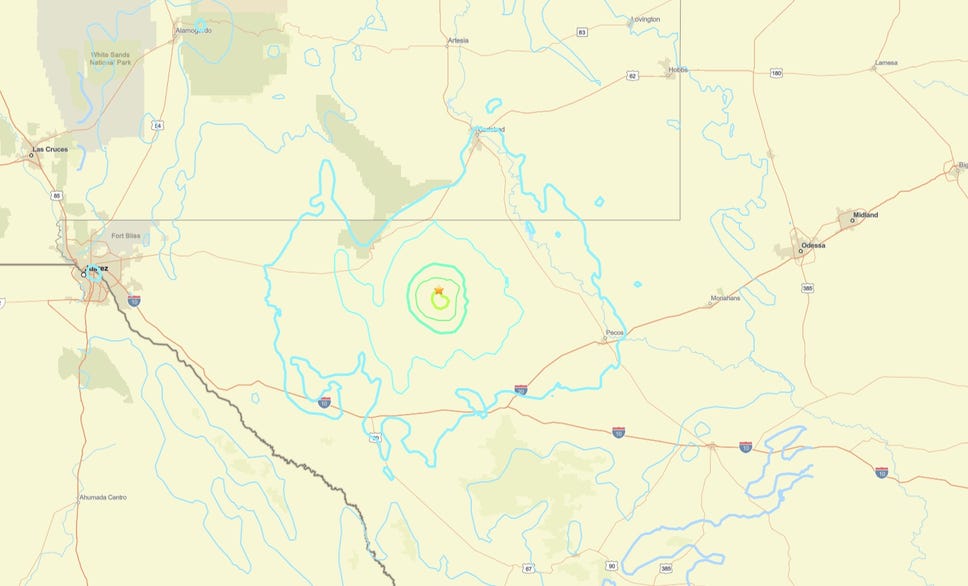
West Texas Earthquake Today: Timeline and Immediate Aftermath
As news of the West Texas earthquake today spreads, details about the seismic activity’s timing and duration have become increasingly important. The earthquake, which was a significant event, has prompted a closer look at its various aspects.
Epicenter Location and Technical Details
The earthquake’s epicenter was located in Culberson County, Texas, with a depth of 7.5 km. This information is crucial for understanding the technical aspects of the seismic event.
Technical details of the earthquake include its magnitude, which was recorded as 5.3 on the Richter scale. Such details help in assessing the severity and potential impact of the earthquake.

| Parameter | Value |
|---|---|
| Magnitude | 5.3 |
| Depth | 7.5 km |
| Epicenter Location | Culberson County, Texas |
Timing and Duration of the Seismic Activity
The earthquake occurred at [specific time], and its duration was reported to be several seconds. Understanding the timing is vital for coordinating response efforts.
The immediate aftermath saw emergency services being alerted, and initial assessments being made regarding the impact on nearby communities.
Further analysis of the seismic activity will help in determining the cause and potential for future events.
El Paso Earthquake Impact: Neighborhood by Neighborhood
El Paso residents experienced the earthquake differently, with some areas feeling the quake more intensely than others. The varying impact across the city highlights the importance of understanding how different neighborhoods were affected.
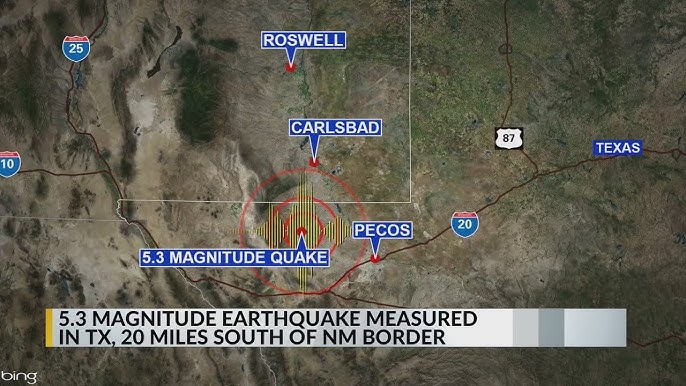
Downtown and Central El Paso Experiences
Downtown El Paso, being a densely populated area, felt the effects of the earthquake with reports of moderate shaking. Residents and visitors alike described the experience as unsettling but generally not catastrophic. The city’s central business district saw some non-structural damage, such as fallen objects and minor cracks in buildings.
According to eyewitness accounts, the earthquake caused some disruptions in downtown El Paso, with a few businesses reporting minor damage. However, overall, the area’s infrastructure held up well against the quake.
East and West Side Communities Response
The east and west sides of El Paso had different experiences during the earthquake. Some neighborhoods on the west side reported lighter shaking, while areas on the east side felt more intense vibrations. Residents on the east side described hearing loud rumbling noises accompanying the quake.
Community response was swift, with neighbors checking on each other and local community centers opening as gathering points for information and support.
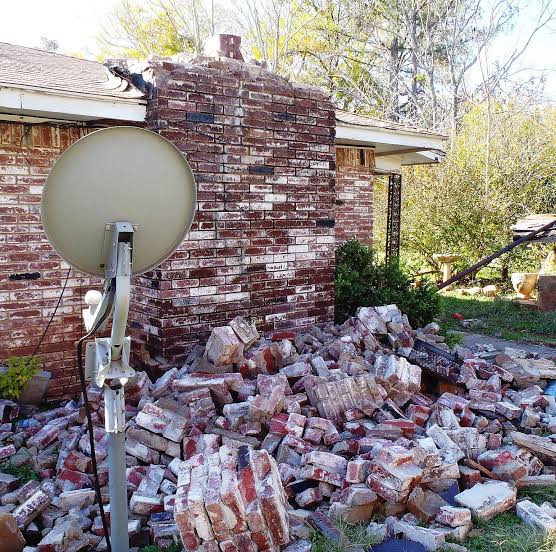
Structural Assessment in Urban Areas
Initial assessments indicate that while there were some non-structural damages, such as broken glass and displaced furniture, major structural damage was minimal. City officials and engineers are conducting thorough inspections to ensure that buildings meet safety standards.
| Neighborhood | Intensity of Shaking | Reported Damage |
|---|---|---|
| Downtown El Paso | Moderate | Minor non-structural damage |
| East Side | Moderate to Strong | Some non-structural damage, displaced objects |
| West Side | Light to Moderate | Minimal damage reported |
As the city continues to assess the impact, residents are coming together to support one another, reflecting the community’s resilience in the face of seismic activity.
Carlsbad NM Earthquake Effects and Local Response
Carlsbad, New Mexico, experienced the effects of the recent earthquake, with residents reporting light shaking. The 5.3 magnitude seismic event, which struck the West Texas and New Mexico border, prompted a swift response from local authorities in Carlsbad.
The earthquake’s impact on Carlsbad was notable, with variations in intensity across different neighborhoods. Understanding these variations is crucial for assessing the overall effect on the community.
Intensity Levels Across Carlsbad Neighborhoods
The intensity of the earthquake in Carlsbad was not uniform, with some areas experiencing more pronounced shaking than others. Residents in downtown Carlsbad reported mild shaking, while those in outlying areas described the tremors as barely perceptible.
| Neighborhood | Intensity Level | Resident Reports |
|---|---|---|
| Downtown Carlsbad | Light | Mild shaking, minor rattling of objects |
| East Carlsbad | Very Light | Barely perceptible tremors |
| West Carlsbad | Light | Noticeable shaking, some disturbance |
The variation in intensity levels across Carlsbad neighborhoods highlights the complex nature of seismic events and the importance of localized assessments.
Municipal Emergency Management Actions
In response to the earthquake, the City of Carlsbad activated its emergency management protocols. Emergency responders were deployed to assess the situation and provide assistance where needed.
The municipal government’s actions included:
- Conducting safety inspections of critical infrastructure
- Establishing communication channels with the public
- Coordinating with state and federal agencies for potential support

The proactive measures taken by Carlsbad’s municipal government helped mitigate the impact of the earthquake, ensuring the safety and well-being of residents.
USGS Latest Earthquakes: Scientific Analysis of the Seismic Event
The USGS provided a detailed analysis of the recent 5.3 magnitude earthquake that struck West Texas and New Mexico. This analysis is crucial for understanding the seismic activity in the region.
The USGS’s scientific analysis involves examining seismograph readings to determine the earthquake’s characteristics. These readings help in understanding the earthquake’s magnitude, depth, and epicenter.
Seismograph Readings and Technical Interpretations
The USGS uses advanced seismographs to record seismic waves generated by earthquakes. For the recent West Texas and New Mexico earthquake, the seismograph data indicated a magnitude of 5.3 on the Richter scale.
Technical interpretations of the seismograph readings revealed that the earthquake’s epicenter was located near the Texas-New Mexico border. The depth of the earthquake was also analyzed to understand its impact on the surface.
| Parameter | Value | Description |
|---|---|---|
| Magnitude | 5.3 | Richter scale magnitude of the earthquake |
| Depth | 10 km | Depth of the earthquake’s epicenter |
| Epicenter | Near Texas-New Mexico border | Location of the earthquake’s epicenter |
Aftershock Predictions and Ongoing Monitoring
The USGS also monitors aftershocks following a significant seismic event. For the West Texas and New Mexico earthquake, the USGS predicted potential aftershocks in the region.
Ongoing monitoring by the USGS helps in assessing the likelihood of further seismic activity. This information is critical for emergency response teams and the public to stay informed about potential risks.
By analyzing the USGS’s latest earthquakes data and scientific analysis, we can better understand the seismic activity in West Texas and New Mexico. The USGS’s role in monitoring and predicting earthquakes is vital for public safety and awareness.
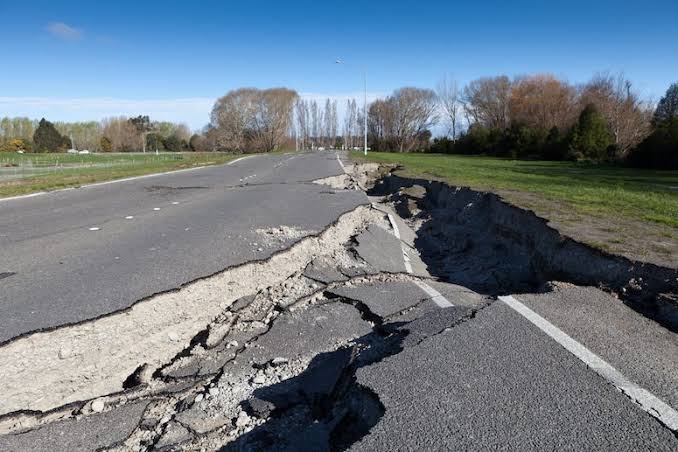
Emergency Response Mobilization Across West Texas and New Mexico
In response to the 5.3 magnitude earthquake, emergency services were swiftly mobilized across West Texas and New Mexico. This rapid response was crucial in ensuring the safety and well-being of the affected communities.
First Responder Deployment and Coordination
First responders were deployed to the affected areas, where they worked in coordination with local authorities to assess damage and provide assistance. Emergency responders were equipped with the necessary resources to handle the situation effectively.
- Fire departments were on standby to address any fires or hazards caused by the earthquake.
- Medical teams were dispatched to treat injuries and provide medical assistance.
- Law enforcement agencies worked to maintain order and ensure public safety.
Public Safety Announcements and Community Resources
Public safety announcements were made to inform the community about the earthquake and provide guidance on necessary precautions. Residents were advised to be cautious of aftershocks and to follow evacuation instructions if necessary.
- Community resources were made available to support those affected, including shelters and emergency aid.
- Information hotlines were set up to provide updates and assistance to the public.

West Texas Earthquake Today Earthquake El Paso Texas Earthquake Today El Paso Earthquake Analysis
The recent earthquake in West Texas has brought attention to the seismic activity in the region, particularly affecting El Paso. This event is part of a larger pattern of seismic activity that has been observed in the area.
Regional Seismic Activity Patterns
The earthquake that struck West Texas is indicative of the region’s seismic activity patterns. Seismic activity patterns in West Texas are influenced by various geological factors, including fault lines and tectonic movements. Understanding these patterns is crucial for assessing the risk and impact of earthquakes in the region, particularly in cities like El Paso.
The region’s seismic activity is characterized by periodic earthquakes, some of which have been significant. Analyzing these patterns helps in predicting future seismic events and in planning mitigation strategies.
Comparison to Historical Events in the Area
Comparing the recent earthquake to historical seismic events in the area provides valuable insights into the region’s seismic behavior. Historical data show that while significant earthquakes are not common in West Texas, they are not unheard of. The recent event, while significant, is part of a broader historical context of seismic activity in the region.
By examining past earthquakes and their impacts, researchers can better understand the potential consequences of future seismic events. This comparison also aids in validating seismic hazard models and improving emergency preparedness plans for areas like El Paso.
Infrastructure and Property Damage Assessment
The earthquake that struck West Texas and New Mexico has prompted a thorough assessment of infrastructure damage and property damage. As the regions affected by the seismic event begin to recover, understanding the extent of the damage is crucial for relief efforts and future planning.

Initial reports indicate that the impact on residential and commercial buildings has been varied, with some structures showing signs of minor damage. The assessment of building impacts is a critical component of the overall damage evaluation.
Residential and Commercial Building Impacts
Residential areas in El Paso and Carlsbad have been surveyed to assess the condition of homes and commercial buildings. While many buildings withstood the earthquake without significant damage, others experienced issues such as cracked walls and broken windows. For instance, in downtown El Paso, several older buildings showed signs of structural stress, necessitating further inspection.
Commercial properties have also been affected, with some businesses reporting damage to their premises. However, the overall impact on the commercial sector appears to be manageable, with most businesses expected to resume operations shortly.
Utility Systems and Public Infrastructure Status
Utility companies are working diligently to assess and restore any disruptions to essential services. Reports indicate that power and water services were not significantly affected, although some areas experienced temporary outages. Public infrastructure, including roads and bridges, is being inspected for damage to ensure safety and facilitate recovery efforts.
The assessment of utility systems and public infrastructure is ongoing, with a focus on restoring full functionality to the affected communities. The resilience of the region’s infrastructure has been a positive note amidst the challenges posed by the earthquake.
Geological Context: Understanding the Texas-New Mexico Border Quake
The recent earthquake in the Texas-New Mexico border area underscores the importance of understanding local fault lines.
The region’s geological context is characterized by a complex interplay of tectonic forces that have shaped the landscape over millions of years.
Regional Fault Lines and Tectonic Activity
The Texas-New Mexico border region is situated near several significant fault lines, including the Guadalupe Fault and the Mayhill Fault.
These fault lines are part of a larger network of fractures and fissures that crisscross the area, influencing local seismic activity.
Tectonic activity in the region is driven by the movement of the North American Plate, which contributes to the area’s earthquake susceptibility.
| Fault Line | Location | Seismic Activity |
|---|---|---|
| Guadalupe Fault | Southwestern New Mexico | Moderate |
| Mayhill Fault | Southeastern New Mexico | Low to Moderate |
| Texas Lineament | West Texas | Low |
Historical Seismic Events in West Texas and Southern New Mexico
Historically, the region has experienced significant seismic events, including earthquakes in the early 20th century.
These events have contributed to our understanding of the area’s seismic hazard.
The region’s geological history, marked by periods of tectonic activity, has shaped the local landscape and continues to influence seismic risk.
Community Reaction and Support Networks
The community’s response to the 5.3 magnitude earthquake that struck West Texas and New Mexico was marked by resilience and solidarity. As the news spread, residents of El Paso and Carlsbad came together to support one another, demonstrating the strength of their community bonds.
Social Media Documentation and Viral Content
Social media played a pivotal role in documenting the earthquake’s impact. Platforms like Twitter and Facebook were flooded with images and videos of the damage, with many posts going viral. This digital documentation not only kept the public informed but also helped in coordinating relief efforts. Residents shared their experiences, and local businesses offered support through social media campaigns.
Grassroots Relief Efforts and Mutual Aid
In addition to social media documentation, grassroots relief efforts were instrumental in providing aid to those affected. Local organizations and community groups mobilized to offer mutual aid, including food, shelter, and emotional support. These efforts were crucial in helping residents recover from the immediate aftermath of the earthquake. The spirit of community and mutual support was evident in the way people came together to help one another.
The earthquake highlighted the importance of community networks and the role they play in disaster response. As the affected areas continue to recover, the resilience and solidarity shown by the communities in El Paso and Carlsbad will be crucial in rebuilding and moving forward.
Recovery Efforts and Government Assistance Programs
In the wake of the 5.3 magnitude earthquake, government assistance programs have been mobilized to support affected communities in West Texas and New Mexico. The swift response from state and federal agencies has been crucial in providing aid to those impacted by the seismic event.
State and Federal Emergency Declarations
Following the earthquake, both state and federal emergency declarations were issued, paving the way for financial assistance and resource allocation to the affected areas. The declarations enable the deployment of emergency personnel, equipment, and funding to support relief efforts.
The Federal Emergency Management Agency (FEMA) has been actively involved in assessing the damage and coordinating relief efforts. Key aspects of the emergency declarations include:
- Provision of financial assistance to individuals and businesses affected by the earthquake
- Deployment of emergency personnel and equipment to support relief efforts
- Allocation of funds for infrastructure repair and rebuilding
Available Resources for Affected Residents
Affected residents have access to a range of resources to help them recover from the earthquake. These include:
- Disaster relief grants to cover temporary housing and home repairs
- Low-interest loans for businesses and individuals to repair or replace damaged property
- Crisis counseling services to support mental health and well-being
Residents are encouraged to visit the official FEMA website and local government resources to learn more about the available assistance programs and to apply for aid.
Earthquake Preparedness: Lessons from the El Paso and Carlsbad Experience
The 5.3 magnitude earthquake that struck El Paso and Carlsbad serves as a significant reminder of the need for preparedness. As communities reflect on the impact of this seismic event, it’s clear that having the right safety protocols in place and being prepared can make a substantial difference.
Safety Protocols During Seismic Events
During an earthquake, safety is paramount. Drop, Cover, and Hold On is a widely recommended protocol. This involves dropping to the ground, taking cover under a sturdy piece of furniture, and holding onto it to prevent being knocked over or pulled away.
It’s also crucial to stay away from windows, mirrors, and any heavy furniture that could fall. If you’re in a vehicle, pull over to a safe location and remain in your vehicle until the shaking stops.
Building Your Emergency Earthquake Kit
An emergency earthquake kit is essential for survival in the aftermath of a seismic event. The kit should include:
| Item | Description | Quantity |
|---|---|---|
| Water | Bottled water for drinking and sanitation | 1 gallon per person per day for 3 days |
| Non-perishable food | Canned goods, dried fruits, and nuts | 3-day supply |
| First aid kit | Basic medical supplies | 1 kit per household |
Having such a kit ready can significantly enhance your ability to respond to and recover from an earthquake.
Conclusion: The Path Forward After the West Texas and New Mexico Earthquake
The recent 5.3 magnitude earthquake that struck West Texas and New Mexico has left a lasting impact on the regions of El Paso and Carlsbad. As the communities continue to recover, it’s clear that the earthquake served as a significant reminder of the region’s seismic activity and the need for preparedness.
Looking at the path forward, it’s essential to build on the lessons learned from this event. Earthquake preparedness is crucial, and the recent seismic activity highlights the importance of having safety protocols in place, conducting regular structural assessments, and maintaining emergency kits.
As the regions move forward, the focus will be on enhancing resilience and mitigating the effects of future seismic events. By understanding the geological context and regional seismic activity patterns, communities can better prepare for what’s to come. The west texas earthquake today has shown us the importance of being proactive in the face of natural disasters.
FAQ
What was the magnitude of the earthquake that hit West Texas and New Mexico?
The earthquake that hit West Texas and New Mexico had a magnitude of 5.3.
Was there an earthquake in El Paso today?
Yes, a 5.3 magnitude earthquake was reported in El Paso today, causing impact across the city and surrounding areas.
How did the USGS respond to the earthquake?
The USGS confirmed the earthquake event, providing an official magnitude assessment and technical details about the seismic activity.
What areas were affected by the earthquake in El Paso?
The earthquake impacted various neighborhoods in El Paso, including downtown, east and west side communities, with varying levels of intensity.
Did the earthquake affect Carlsbad, NM?
Yes, the earthquake was felt in Carlsbad, NM, with different intensity levels reported across various neighborhoods.
What is the geological context of the earthquake in West Texas and New Mexico?
The earthquake occurred in a region with significant tectonic activity, involving regional fault lines that have been associated with historical seismic events.
Are there any aftershock predictions for the region?
According to the USGS, aftershocks are possible in the region, with ongoing monitoring to predict and prepare for any subsequent seismic activity.
What should I do to prepare for future earthquakes?
To prepare for future earthquakes, it’s essential to have safety protocols in place during seismic events and to build an emergency earthquake kit.
What kind of assistance is available for those affected by the earthquake?
State and federal emergency declarations have been issued, providing various resources for affected residents, including assistance programs.
How can I stay informed about the latest earthquake updates?
You can stay informed through official updates from the USGS, local news sources, and emergency management agencies.
































